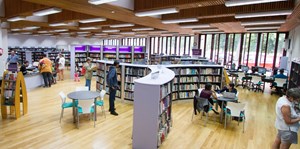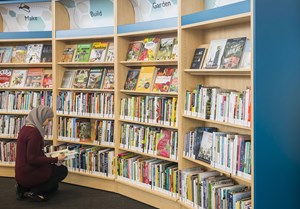To improve the library experience for your customers, you need objective evidence about how people are using your space and resources. Observing and recording anonymous customer behaviours is a powerful way to gather this. This course will introduce the basic methods with easy exercises to build your experience and the opportunity to design your own observation too. Use these techniques to get beyond a familiar workspace and staff assumptions to what your customers actually see and do. Suitable for both public and college libraries.
The course is structured in three Modules, each with a practical task at the end. Module 1 introduces observation methods and focuses on customer visits - age profile and customer flow through the day. In Module 2 you will consider how to use observation to help you plan, locate and merchandise collection displays so that they perform well. Module 3 considers physical routes and how long customers stay at the library, together with some advice on how to deal with what your observations uncover. Your final task is to plan and carry out an observation of your own choice.
 Prices displayed in GBP
Prices displayed in GBP

| What is observation research? | |
| What this research can and cannot do | |
| Why is it worth doing? | |
| Data collected in your libraries | |
| Visible and invisible customers | |
| Case study 1: Which age groups use small libraries? | |
| Case study 2: Which age groups use a central library? | |
| Case study 2: Visitor flow by time of day | |
| Case study 2: Combining age group and time of day | |
| Sample sizes | |
| Is this a breach of privacy? | |
| Preparing for Task One | |
| Task One: Observation of age and gender | |
| Record your results and ask for feedback |

| Effective book displays | |
| How physical factors affect choice | |
| Case study 3: How can displays work harder? | |
| Case study 4: Length of stay measured over a week | |
| Case study 5: Book display before and after changes | |
| Preparing for Task Two: Keeping it simple | |
| Preparing for Task Two: Recording and collating results | |
| Preparing for Task Two | |
| Task Two: Observation of a specific display before and after changes | |
| Record your results and ask for feedback | |
| Extra: quick staff training session |
| Which routes do visitors take through the library? | |
| Case study 6: Tracking customer routes | |
| Case study 7: Destination flow | |
| Case study 8: Optimising shared spaces | |
| What is the average length of visit? | |
| Working alone or with others | |
| Planning for Task Three: your own observation | |
| Prepare for the unexpected | |
| Uncovering bigger challenges | |
| Observing staff procedures | |
| Case study 9: Example raw observation notes | |
| Record your results and ask for feedback | |
| Learning review | |
| More Opening the Book courses | |
| Credits |
